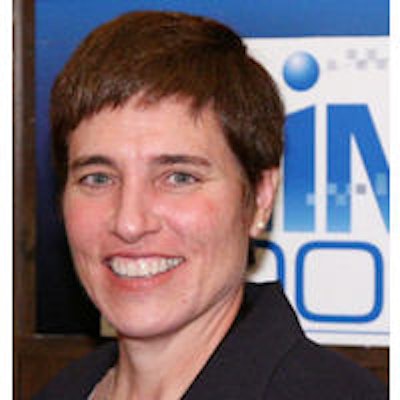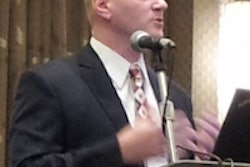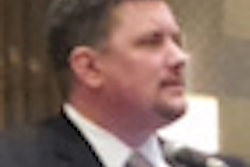
The Society for Imaging Informatics in Medicine (SIIM) annual meeting comes to Grapevine, TX, this week with a full program and exhibition to draw imaging informatics enthusiasts to the Lone Star State.
Fans of the SIIM meeting often point to the show's opportunities to delve deeply into imaging informatics topics in the educational program, and to kick the tires on new offerings in a relaxed environment in the exhibit hall.
AuntMinnie.com spoke with SIIM 2013 program committee chair Katherine Andriole, PhD, of Brigham and Women's Hospital, to get a preview of this year's edition of the conference, which will run from June 6 to 9 at the Gaylord Texan Resort and Convention Center.
AuntMinnie: The theme for SIIM 2013 is translating today's innovations to tomorrow's clinical practice. Can you elaborate on the importance of that topic and how it will be reflected in the program?
Andriole: To me, this is really the soul of what SIIM is and what we've done through the years in terms of understanding limitations, difficulties, and issues in the clinical arena; understanding the technology; and figuring out how to translate that into the clinical practice. The end goal really is to improve care; make it safer, higher quality, and more efficient. We've worked as partners with industry to take some of these research ideas in an effort to translate them into clinical practice.
 Katherine Andriole, PhD.
Katherine Andriole, PhD.Several of the sessions at this year's meeting are going to touch on that, including a new learning track (Learning Track 1: Innovators and Entrepreneurship). That new track is going to talk about how to take some new ideas in the research arena or some new software or tool and how you might bring that into use in the clinical arena.
Our opening session, the annual Sam Dwyer Lecture, will be given by Dr. Bradley Erickson, PhD, on translating innovations to clinical practice. He's really actually done this throughout his career. He's a clinical neuroradiologist, but he's also a PhD who's done work with image processing, quantitative imaging, creating electronic records, and so on. He's taken a lot of what he does and actually uses it in the clinical arena and will share that experience with us.
We also have our Open Source Plug Fest, where we have a number of members who have come up with software tools or maybe hardware devices they can show. They are typically open-source or public domain, and we have a session at the meeting where they can actually demonstrate the tools, and people can walk around this area in the exhibit hall and talk to the presenters and try out the tools.
We have, of course, the exhibitors, and that's a huge foundation of our meeting. They'll often be showing beta products because they know that the people who attend SIIM are often the early adopters of some of these technologies. Most of the exhibitors send not just sales folks, but some of their technical and management folks as well.
We will have Innovation Alley in the exhibit hall, which we tried out last year and will do again this year. People have applied to basically get a seat at Innovation Alley, and it may be early on before they're really ready for a startup. Vendors and other attendees can come by and give them feedback on their ideas.
So there are a lot of activities that are really hitting at that main theme.
Are there any new additions or changes for this year's meeting?
We always refresh the learning tracks, and there are a number that we repeat based on feedback and maybe tweak them a little bit. But we also have a number of new learning tracks. In addition to Learning Track 1: Innovators and Entrepreneurship, we also have an exciting new track on Reinventing the Radiologist (Learning Track 6).
We've also added a town hall session to the learning tracks. This isn't a didactic session at all, and it will be open for attendee discussion. They will be moderated, of course, but the idea is to have more intimate discussion in a third session after you've had the didactic and other learning experiences in the particular track.
Our Open Source Plug Fest will be held across two days instead of one. People have mentioned that they didn't have time to go see it because there are other things happening. The sessions will repeat on Thursday and Friday.
We've also asked all of our demo authors to have explanatory posters, so that if people go by in the Open Source Plug Fest and it's not in session, they can get some sense as to what the demo might be.
We've also moved one learning lab. Sunday was a traditional half-day for the conference, and that's when we've been holding these hands-on learning labs. This year we're having one learning lab on Saturday, while also continuing the traditional Sunday session.
We also have a couple of new hot topics, including sessions on personalized medicine, decision support, and surviving electronic medical record implementation. We will be having online meeting evaluations and have also added wireless in all of the meeting rooms.
We understand there will be a number of educational opportunities targeted at imaging informatics professionals (IIPs) and certified imaging informatics professionals (CIIPs). What are the key events that should be on the radar of all IIPs and CIIPs?
This is a huge percentage of our membership, and we hold a full day of what we call boot camp that starts before the conference. The idea of that is to go through many of the topics that a CIIP would need to know before the certification exam, and also help them target what they may want to listen to or go to at the actual meeting itself.
We will also have a dedicated learning track (Learning Track 2: Career Development for CIIPs) that will talk about how to be successful in an organization, some ideas about leadership and management, and how one might progress from CIIP to chief information officer. We will have study group sessions, again for folks who are planning to take the CIIP test.
Some of the things that have really been appreciated and successful are our roundtables and networking. There's going to be a networking reception on Friday evening, specifically for CIIP folks.
SIIM has worked in recent years to get vendors more involved in the annual meeting, such as participating in applied learning vendor tie-in sessions. What can SIIM 2013 attendees look for in terms of the exhibit hall and opportunities to interact with vendors?
The vendors are a vital and essential part of our society. I think we're one of the few societies that has vendor folks as actual constituent members. We learn a lot from our vendors, and we continue to include them in the vendor tie-in sessions that we started a couple of years ago. We really find invaluable the insight and experience they bring to the table.
We will also have a number of talks in the Innovation Theater, an open theater in the exhibit hall. Topics will include applications for mobile technology, advanced visualization, DICOM, and a discussion/debate on vendor-neutral archives versus archive-neutral vendors.
We will also have a hot topic on the SIIM Workflow Initiative in Medicine (SWIM), and have invited vendors to participate in the demonstration. The exhibit hall is something that makes our meetings different from some of the other didactic meetings out there in radiology and even in imaging sciences that don't have that flavor in their meeting.
The exhibit hall will be open from 11 a.m. to 4:30 p.m. on both Thursday and Friday. We chose 11 a.m. as a starting time because we heard from vendors that they are often having business meetings with potential customers and appreciated a later start. Saturday is a half-day (11:30 a.m.-1:30 p.m.).
We've also made a big effort to have blocks of unopposed time that have no sessions going on in the lecture hall to allow people time to visit the exhibit hall and not miss any of the lecture or didactic activities going on.
We've heard from both vendors and attendees that our meeting is more "kick the tires" -- finding out what's possible and what's out there. It's not necessarily sealing the deal, which is kind of more the RSNA meeting. But the vendors have expressed to us that our attendees come to them with more educated questions and are there to find out information and to have very detailed discussions. We think this works well from both sides.
Are there any other meeting highlights that attendees should be aware of?
In addition to the previously discussed Dwyer Lecture by Dr. Erickson and Learning Track 6: Reinventing the Radiologist, I'd like to highlight the closing general session: Quality, Quantity, or Both: Can You Really Have It All?
We are also very pleased with our scientific sessions this year. The quality of our scientific sessions has gone up and up. We have a number of sessions that relate to learning, and some of them really don't fit into the learning track and are standalone. That's why we've separated out scientific sessions from the learning tracks this year.
In those sessions, we will also be trying out an audience response system for asking questions of speakers.
There will also be a roving tour of the posters and demos. Anybody can go along on the tour, which is led by a faculty member. The authors of the submissions are standing there, and can have a conversation with the attendees about their poster. It's really a fun and enlightening activity for the attendees and also the authors.
I would also mention the SIIM Membership Meeting and Fellows Induction Luncheon, which will be held on Friday from 12 p.m. to 1 p.m.


















